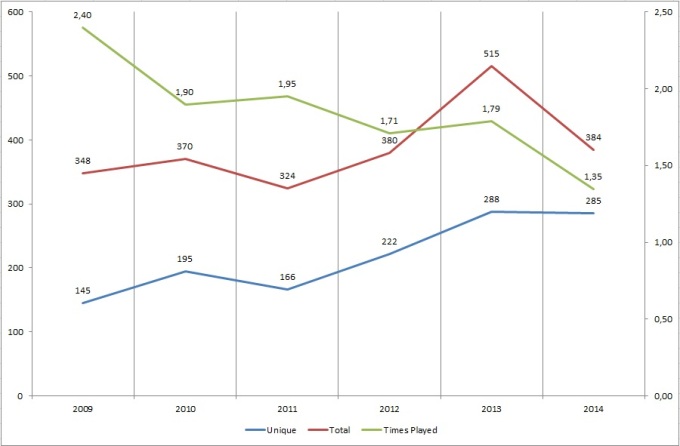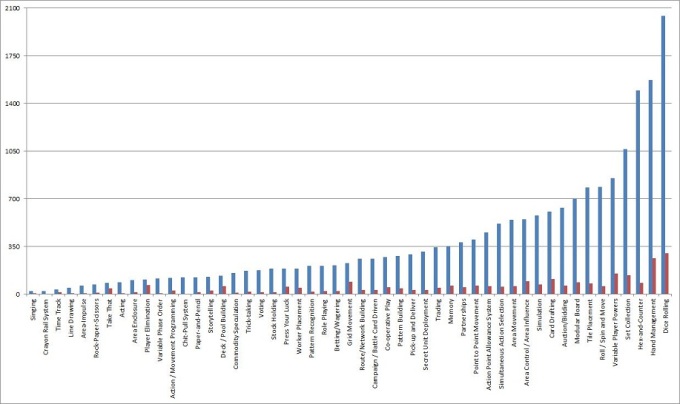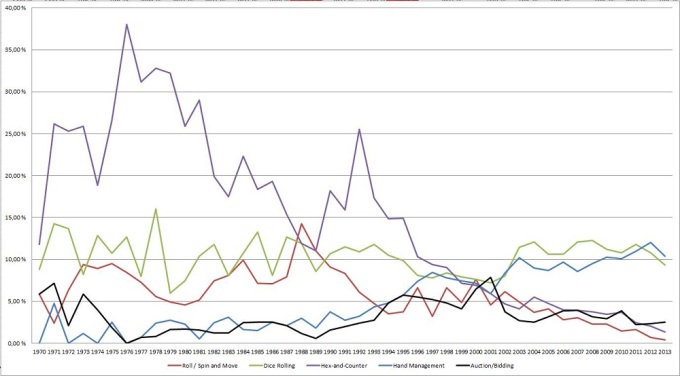I’ll continue a little on the data I collected from BGG. I just listened the latest On Board Games podcast titled The Evolution of Games, while I have different opinions on some things they said on the podcast it left me thinking about how games have changed.
There are two things that I want to shortly touch on this post. First is how the popularity of ranked games in BGG has changed over the years. I made the cutoff in the past 30 years as beyond that the ranked games total gets really small and fluctuations on the variability is huge from year to year beyond 1986. The only interesting thing beyond that year is a bump in the Science Fiction category that takes place between 1977 and 1983. Conincidentally, those are the years when Star Wars Episode IV: New Hope and Star Wars Episode VI: Return of the Jedi came out.
Anyhow, the list of the 10 most popular categories using the BGG data in the past 10 years (2014 – 2005) looks like this:
- Card Game
- Dice
- Science Fiction
- Fantasy
- City Building
- Zombies
- Deduction
- Fighting
- Real-time
- Civilization
The same list from years 1994 – 1985 look like this
- Card Game
- Collectible Components
- Miniatures
- Ancient
- American Civil War
- Action / Dexterity
- Bluffing
- Medieval
- City Building
- Word Game
Just looking at those list you can see that what we play today is very different from 30 years ago. Card game category is very stable across the years and should be. That category covers a lot of ground from single card deck games to Magic the Gathering and everything between and beyond using decks of cards.
Another thing that was talked about in the podcast was the length of games. Are we playing shorter and shorter game each year in average? The answer is yes. The average game time has been dropping steadily. I took the playing time of each ranked game and look them year by year.
The above graph shows the average playing time of a game from 1976 to 2015. A very noticeable decrease in playing time all through the years. Another persistant change I saw in the data is the what kind of games are ranked.
The blue line in the above graph is the percentage of games with playing time of 60 minutes or under, while the red line is the percentage of games with playing time over 60 minutes. It’s hard to represent this data beautifully but still detailed without proper education. However the following graph shows a little closer look through the years.
Blue bars are games with lenght under 20 minutes or fillers. Red bar is the light euro graph with playing time of 20 to 60 minutes. Green bar is the standard euro lenght of 60-120 minutes and the purple is games over 120 minutes. The most common set playing time in BGG is 45 min.
The boardgaming hobby is definately evolving and I’m happy to enjoy the ride. Each year brings a ton of new games to test. The downside of this is that games that would have been great a years ago are just good nowadays. I know I’m more picky now compared to when I started playing.









